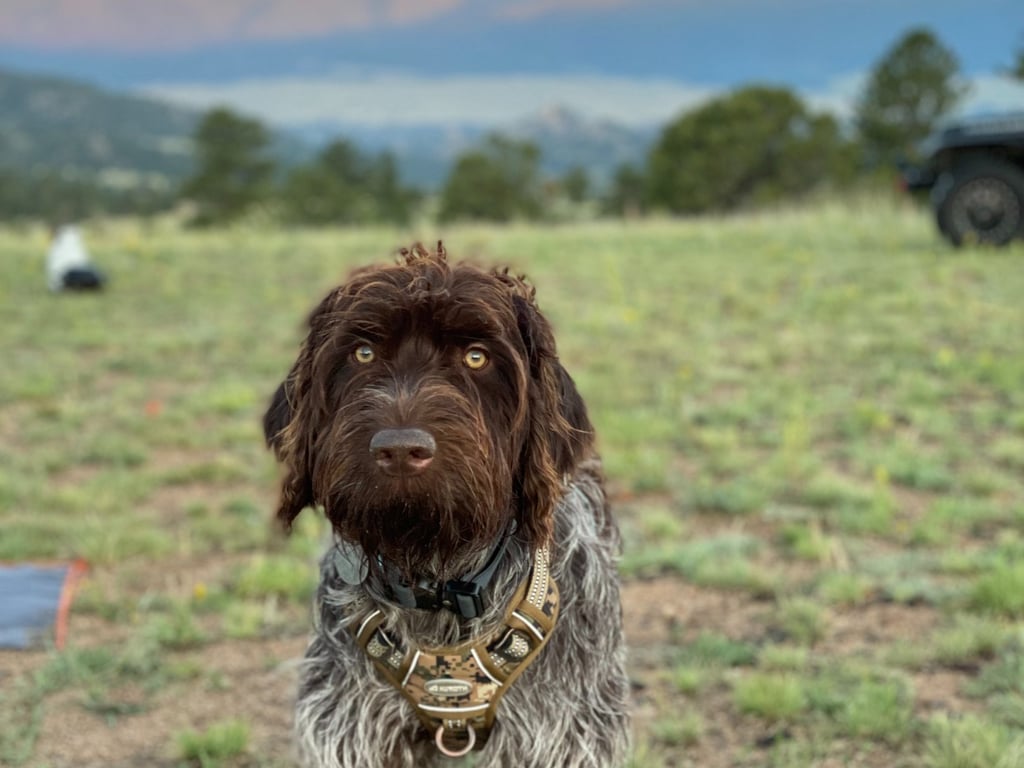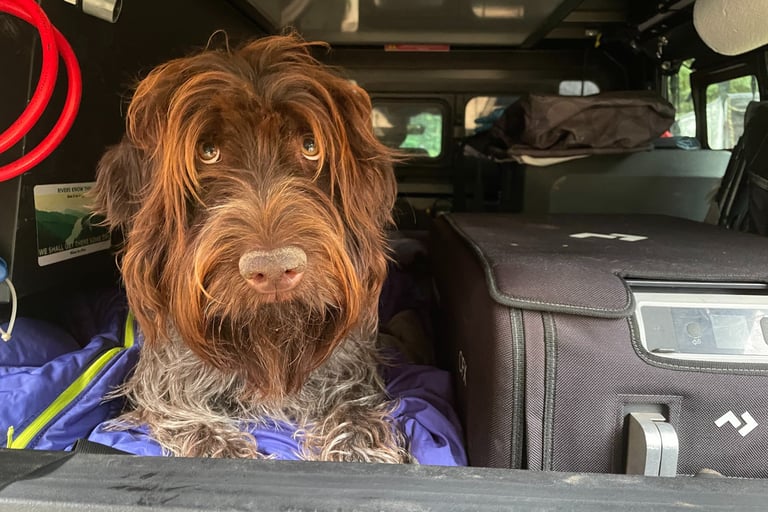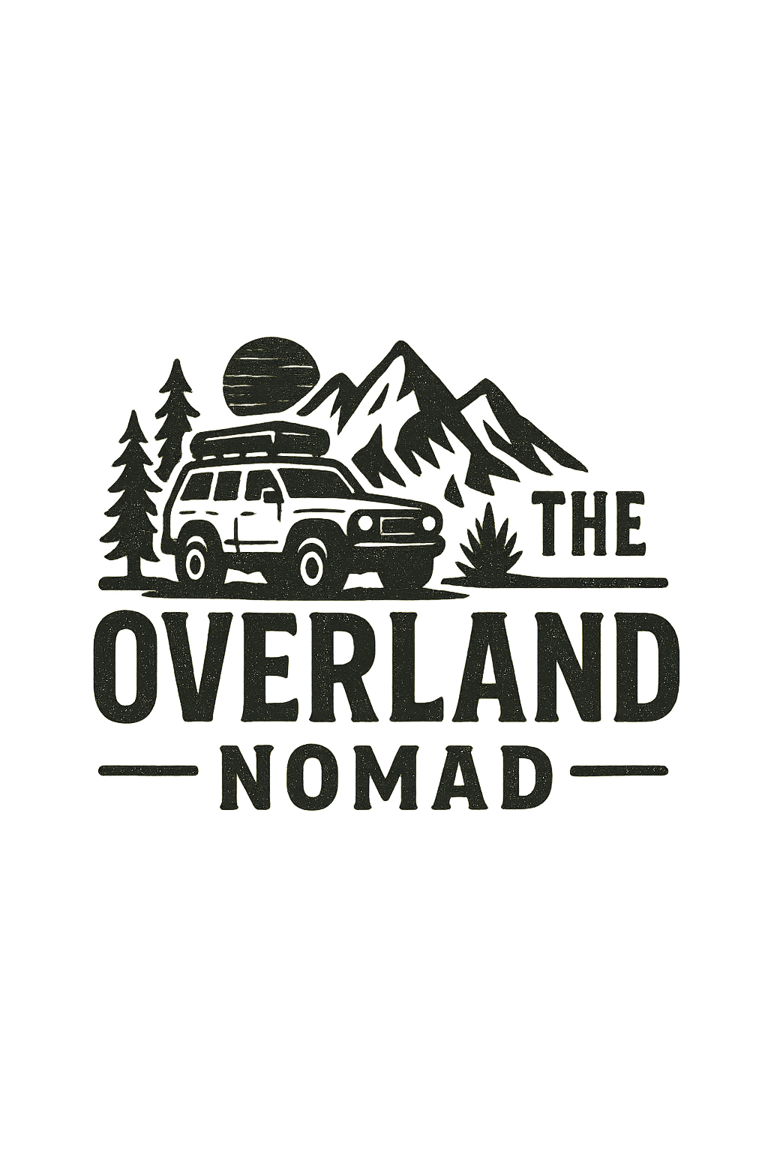Overlanding with Dogs: 7 Tips for a Safe and Memorable Adventure
Bringing your dog along for an overlanding trip adds a whole new layer of joy to life on the road. But it also comes with unique challenges—some you might not expect until you're knee-deep in mud with a soaked sleeping bag and a dog who just chased a deer into the woods. Whether you're heading out for a weekend escape or a cross-country expedition, these 7 trail-tested tips will help you and your four-legged co-pilot travel safer, smarter, and with way more tail wags than headaches.
LOGBOOK
The Nomad
6/18/20254 min read


🐾 Tip 1: Prep Your Pup Before You Go
Start with a pre-trip vet visit to make sure vaccinations are current and your dog is protected from fleas, ticks, and heartworm. I use Simparica Trio—keeping your dog tick-free is not just healthier, it's cleaner when they sleep near your bed or gear. You can get it from your vet, or from Chewy.com. If you have to be budget conscious, you can also order from sites like VetShopMax. You won'd need an RX for a vet, but in a pinch, if you can't afford a trip to the vet it's cost efficient. However, it ships from Australia so it isn't the fastest.
Training is critical: a solid recall and sit/wait command will save you more than once. For active dogs, I highly recommend e-collar training. Ideally look for one that is waterproof, durable, and has great range. I go with a model from Garmin. It checks all of those boxes. It may be on the pricier side, but I couldn't put a price on the rewards of the training.
I also keep a small pre-packed dog kit with essentials:
Updated ID tags and rabies verification
🚗 Tip 2: Riding Comfortably (and Safely)
Whether your dog rides up front or in the back, their safety matters. I built a DIY dog platform—carpeted plywood with a folding aluminum leg—to create a flat surface over the back seats. Keeps hair and mud off the upholstery and gives my dog a solid spot to rest.
Use a seatbelt-compatible harness to keep your dog secure. If they ride in a truck bed, a weatherproof travel kennel is a must for both safety and comfort.
And don’t overlook anxiety. Bring familiar items like toys or blankets and be ready for mid-trip accidents with cleaning supplies. Stress happens, and a little prep goes a long way.
🛌 Tip 3: Dial In the Sleeping Setup
Where your dog sleeps will affect everyone’s rest. Inside
a tent or camper? Bring a familiar blanket or pad. In a
rooftop tent? Space is tight, so only small dogs may fit.
Larger breeds might need a separate space inside the
vehicle or in a kennel.
If your dog sleeps outside in a truck bed, make sure
they have a secure, insulated kennel. But be mindful:
not all dogs are suited for outdoor sleeping, especially
with sudden weather shifts or wildlife activity. Always
have a backup plan to bring them inside if needed.
Routine, comfort, and safety are the trifecta here.
🥣 Tip 4: Food & Hydration on the Go
Stick to your dog’s normal feeding routine when possible. For food storage, I use a watertight bag stashed in the tongue box, hung via magnet to keep critters out.
Pro tip: Pack more food than you need. You might not find your dog’s brand in small mountain towns, and a sudden change can upset their stomach.
Water is just as crucial. Dogs dehydrate fast on trails, so keep extra water jugs in your vehicle and use a collapsible bowl for hikes.
In my daily kit:
Organic calming treats (great for anxious travelers)
🌾 Tip 5: Trail Etiquette
& Outdoor Safety
Always check if trails allow dogs and follow posted leash rules. Even if your dog is well-trained off-leash, other hikers’ dogs may not be—some are reactive or anxious.
Wildlife awareness is key. Hank once bolted after a deer and covered serious ground before my recall training and e-collar brought him back. Keep your dog tied off during camp setup, meal prep, or any time you’re distracted.
Quick tips:
Clean up waste. If you have ever stepped in something, you know it is not fun.
Nightly check of their fur and ears for burrs or anything that can irritate them.
Paw checks after hikes, primarily for injuries that need to be cared for.
A simple trail med kit (you can pare down into a ziplock bag for optimizing space)
🎒 Tip 6: Must-Have Dog Gear
for Overlanding
You don’t need the fanciest gear—just reliable stuff that holds up. Dogs are rough on equipment, so go for practical over pricey. The links I included are items that I've tested and would buy again.
My kit and some recommendations:
Seatbelt harness & Garmin e-collar (Note: e-collar's require intense training before relying on them. I'll do a future review on training demands for your overland pet companion in the future.)
Watertight food bag (I have only used the Marchway but I bet for this application any will do.)
Dog pad and their favorite blanket (we use this sleeping bag sometimes, but any blanket from home works fine.)
Insulated jacket for cold nights - Unfortunately the one we use is discontinued, this one is similar but the gaiter neck is a cool addition)
Travel kennel for truck bed setups (I don't have a brand to recommend, but collapsible versions are best.)
First aid kit - I have these on hand and recommend them. (MyMedic or REI)
Optional but worth it in the most remote places:
Dog pack for hikes
Updated ID tag with your contact info
❤️ Tip 7: The Bond Built on the Road
Traveling with a dog isn’t always easy. Honestly, it can be more stressful than traveling with kids. There are unexpected messes, anxious moments, and the occasional vanishing act into the woods.
But it’s worth it.
Dogs adapt. They settle into the rhythm of the road, find their spots, and become a quiet part of your camp routine. Their excitement, loyalty, and sense of wonder amplify every stop along the way.
My favorite part of every trip? I wake up before everyone else, brew a hot cup of pour-over coffee, and sit with Hank while he eats. We watch the sun rise in silence before the bustle of packing and moving begins. It’s the kind of peace you don’t find in everyday life.
Your dog won’t just ride along—they’ll become part of every memory.


